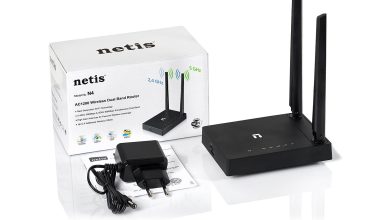Here’s how to create a Wireless Access Point using dd-wrt v24. Please pay special attention to the Review section of this article, especially if you are using an older version.
- Hard reset or 30/30/30 the router to dd-wrt default settings
- Connect to the router @ http://192.168.1.1
- Note: If this router is wired to another router, there may be conflicts (both routers could have the same IP address). For the time being, disconnect this router from the main one.
- Open the Setup -> Basic Setup tab
- WAN Connection Type : Disabled
- Local IP Address: 192.168.1.2 (i.e. different from primary router and out of DHCP pool)
- Subnet Mask: 255.255.255.0 (i.e. same as primary router)
- DHCP Server: Disable (also uncheck DNSmasq options)
- (Recommended) Gateway/Local DNS: IP address of primary router (many things will fail without this)
- (Optional) Assign WAN Port to Switch (visible only with WAN Connection Type set to disabled): Enable this if you want to use WAN port as a switch port
- (Optional) NTP Client: Enable/Disable (if Enabled, specify Gateway/Local DNS above)
- Save
- Open the Setup -> Advanced Routingtab
- (Optional) Change operating mode to: Router
- Save
- Open the Wireless -> Basic Settingstab
- Wireless Network Name (SSID): YourNetworkNameHere
- (Optional) Sensitivity Range: The max distance (in meters) to clients x2
- Save
- Open the Wireless -> Wireless Securitytab
- Note: Security is optional, but recommended! Clients must support whatever mode you select here.
- (Recommended) Security Mode: WPA2
- (Recommended) WPA Algorithm: AES
- (Recommended) WPA Shared Key: >8 characters
- Save
- Open the Services -> Servicestab
- (Optional) DNSMasq: Disable (enable if you use additional DNSMasq settings)
- (Optional) ttraff Daemon: Disable
- Save
- Open the Security -> Firewalltab
- Uncheck all boxes except Filter Multicast
- Save
- Disable SPI firewall
- Save
- Open the Administration -> Management tab
- (Recommended) Info Site Password Protection: Enable
- (Recommended) Routing: Disabled (enable if you need to route between interfaces)
- Apply Settings and connect Ethernet cable to main router via LAN-to-LAN uplink
 Как быстро узнать свой номер телефона с помощью определенного USSD-запроса
Как быстро узнать свой номер телефона с помощью определенного USSD-запроса Перепрошивка роутера Netis N4 от Kyivstar под других провайдеров
Перепрошивка роутера Netis N4 от Kyivstar под других провайдеров